The narrow but often wavy strip of sea separating the islands of Koufonissi from the opposite shores of Crete was not an obstacle to the continued presence of humans in ancient times. The ancient name Lefki (meaning white), was given by the glint of white limestone and marl in the sunlight.
Koufonissi was an economic and cultural center from the Minoan until the Greco-Roman Times and was claimed by all major cities of the region. As recorded on the inscription of the Magnites, currently embedded on the facade of the Toplou monastery church, there was a great dispute between Itanos and Ierapytna about the island. In 132BAD the island was owned by Itanos.
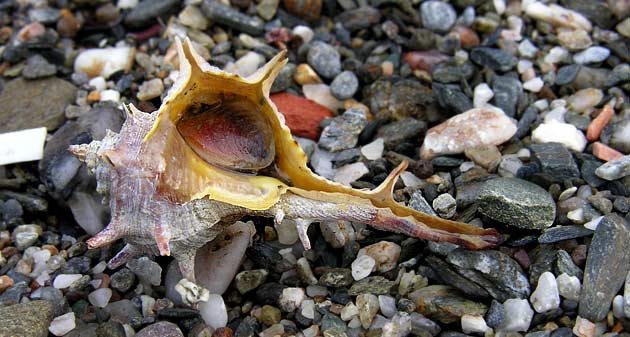 Tyrian purple shell
Tyrian purple shell
The history of the islands is inextricably linked to the sponge fishing and processing of Tyrian purple, the red dye used by Ancients and Byzantines, which was extracted by the gastropod Murex brandaris. As Aristotle and Pliny say, live shells were gathered in early autumn or winter and were then put in pots, until many of them were gathered, because each shell produced just one drop of dye. After that, the smaller shells were broken with stones. The larger mollusks were pierced and then a small gland called "flower" was extracted. Then, they put the milky liquid in salt, added a little vinegar, and left this in the sunlight. Its color turned red from yellow and was then diluted or condensed with boiling. The dye, the Tyrian purple, was sold at that time as it weighed in silver. If they added hyacinth blooms, the color was violet, but it was considered of inferior quality.
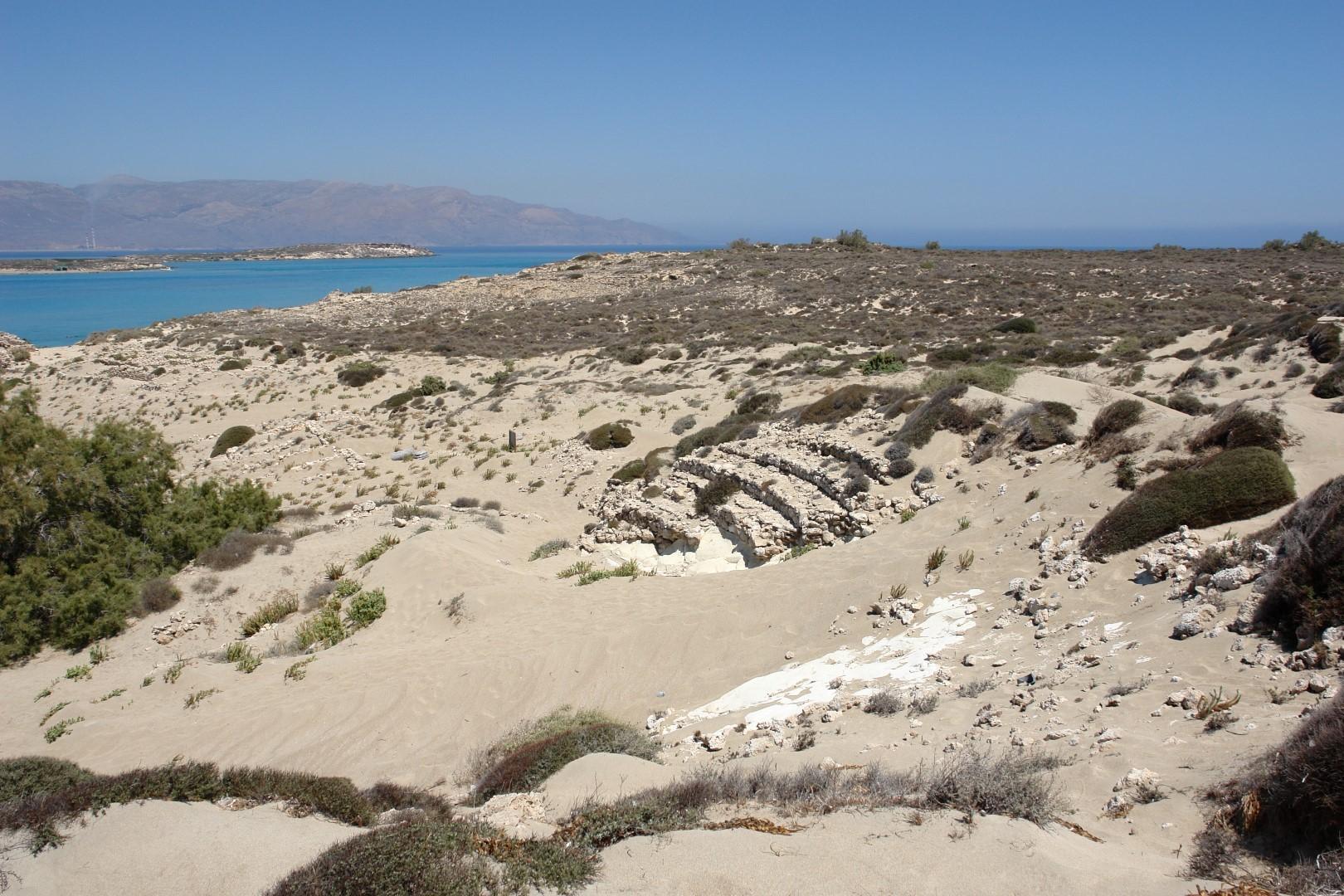
The orchestra, almost chamber, was paved with clay tiles. The stage, completely corrupt in its western part, should have a length of 20m while the width is estimated at about 9m. At the eastern end one can make out the paraskenion, the pulpitum or stage, the hyposkenion, and also the east parados which was vaulted. The theater had rich decoration, which was vandalized. The theater was destroyed and burned with ferocity at the end of the 4th century.
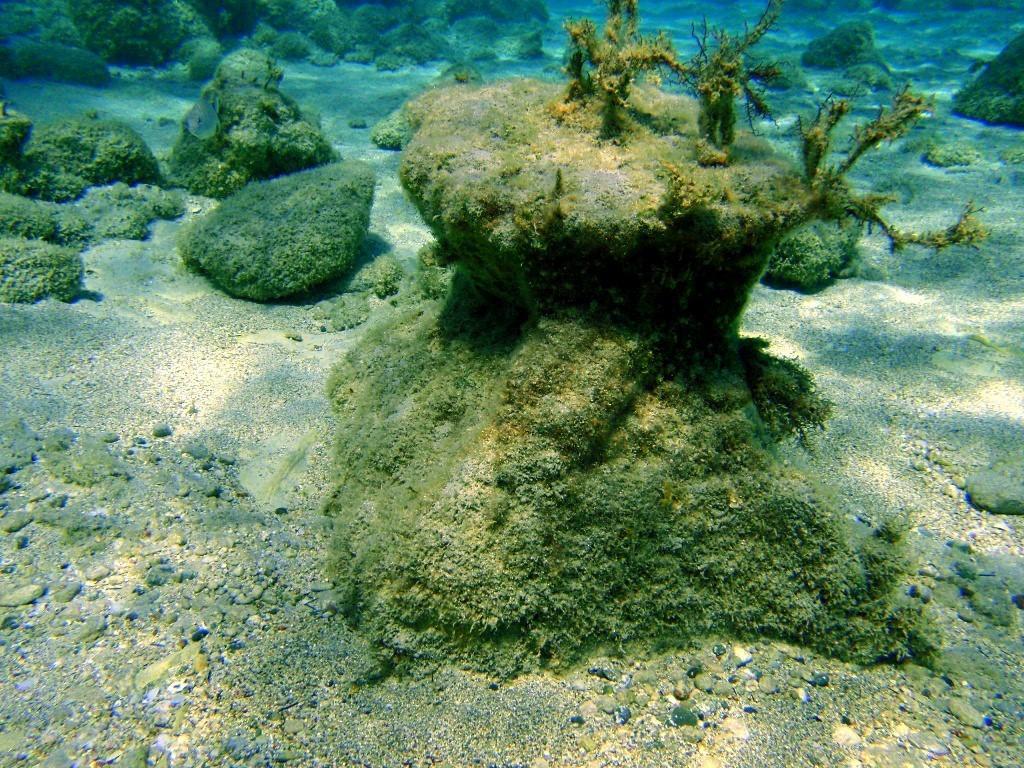
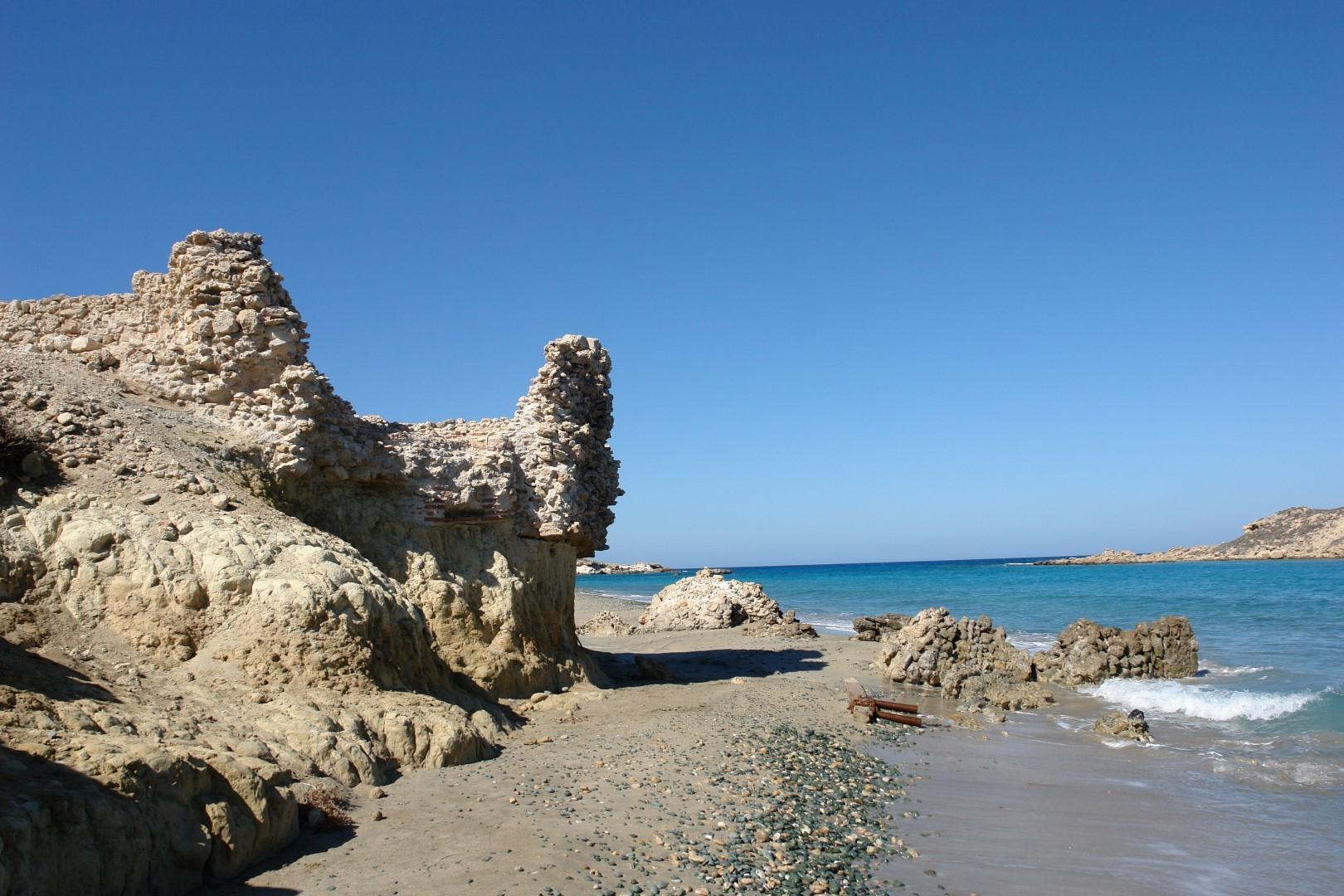
The Bath complex of Koufonisi includes all the spaces that followed the standards of the Roman Baths: Around a garden, there are rooms such as that for the central heating system (which’s walls are preserved at a height of 4 m), two hypocausts (perhaps for men and women separately), baths for sweating, warm, hot and cold bath and changing rooms. Luxury is still visible in some rooms, in the preserved parts of the marble floor and walls. A large number of vaulted tanks with pipelines is impressive. They were used to bring water from the springs located north of the Temple to the other side of the island.
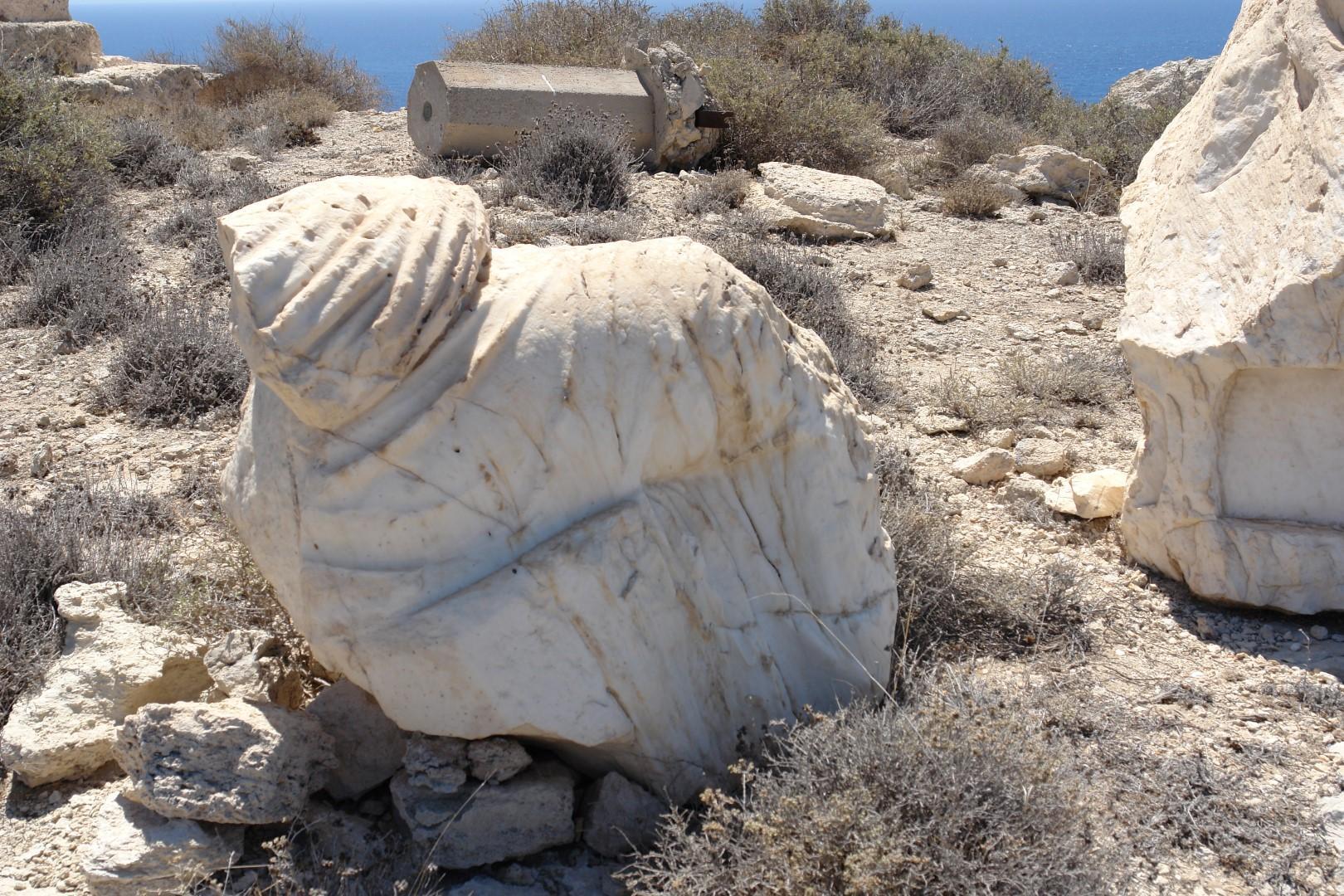
The rest of the statue, however incredible it may seem, must have been broken up by the workmen and used as a building material for the lighthouse (which was bombed in 1944). Here the lumps of marble can be seen wedged among the other stones, also the huge symmetrical blocks which were uprooted from the temple of which only the steps and the filling remain - even the flooring has disappeared. As if all this were not enough, in more recent years, a metal automatic lighthouse pylon (now removed) had been set up over the fIoor of the temple, placed perhaps, who knows, by the ironical hand of fate right where the colossal statue of the deity, worshipped by the peopIe of Lefki, used to stand in all its splendor.
Visitors to the island, mainly saiIors, have scratched names and dates onto the surfaces; one of the dates discernable is 1630.









 The antiquities of Koufonissi
The antiquities of Koufonissi







































































